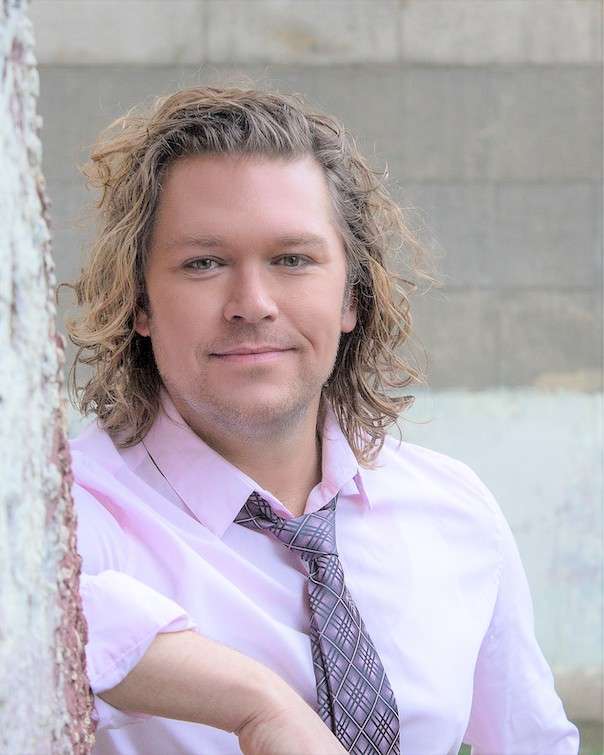Text & Photos: Christopher Ludgate
I woke along the fields outside of Casablanca, Morocco, with its grazing herds and silvery olive trees. The rising sun lit the swooping valleys and carved crops in shades of nude and burnt tangerine as I made my way south.
From this long stretch of highway, farmers and shepherds shielded by their brimmed palm leaf hats were visible, immersed in this agriculturally rich but barely industrialized Northern African region.
My journey through Marrakech, the Ourika Valley in the High Atlas, and the Agafay Desert would soon cultivate an admiration for Moroccan culture’s integral relationship with nature.
Exploring rural nooks, a bit of nomadic culture, and an organic tajine cooking class with Atelier Chef Tarik, I’d soon learn firsthand just how a connection to nature is a deeply valued part of the culture’s customs and identity in the Kingdom of Morocco.
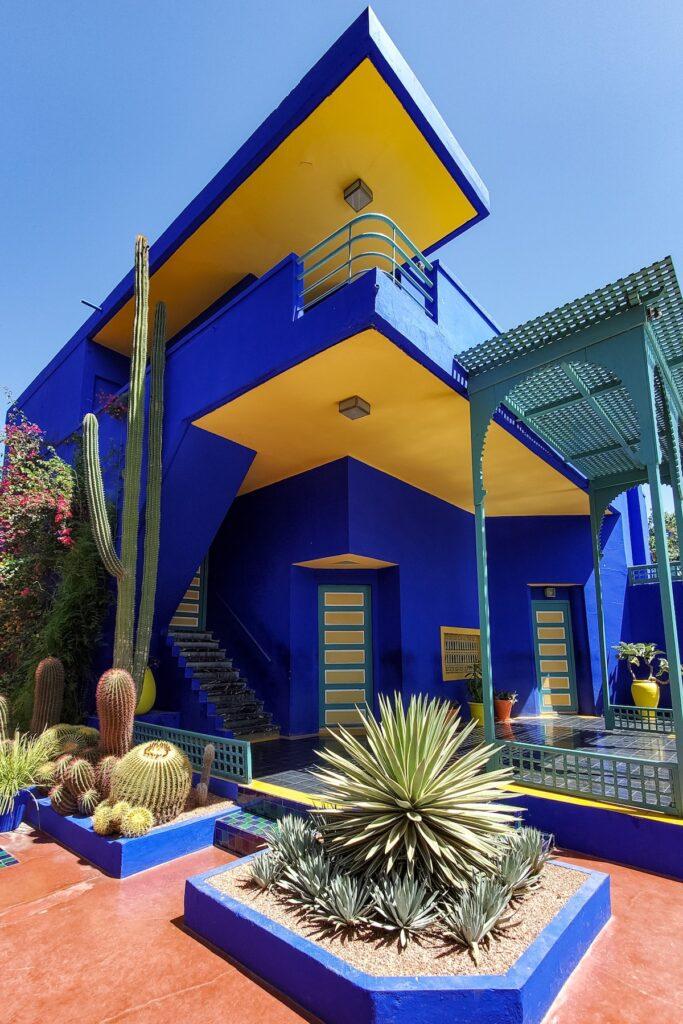
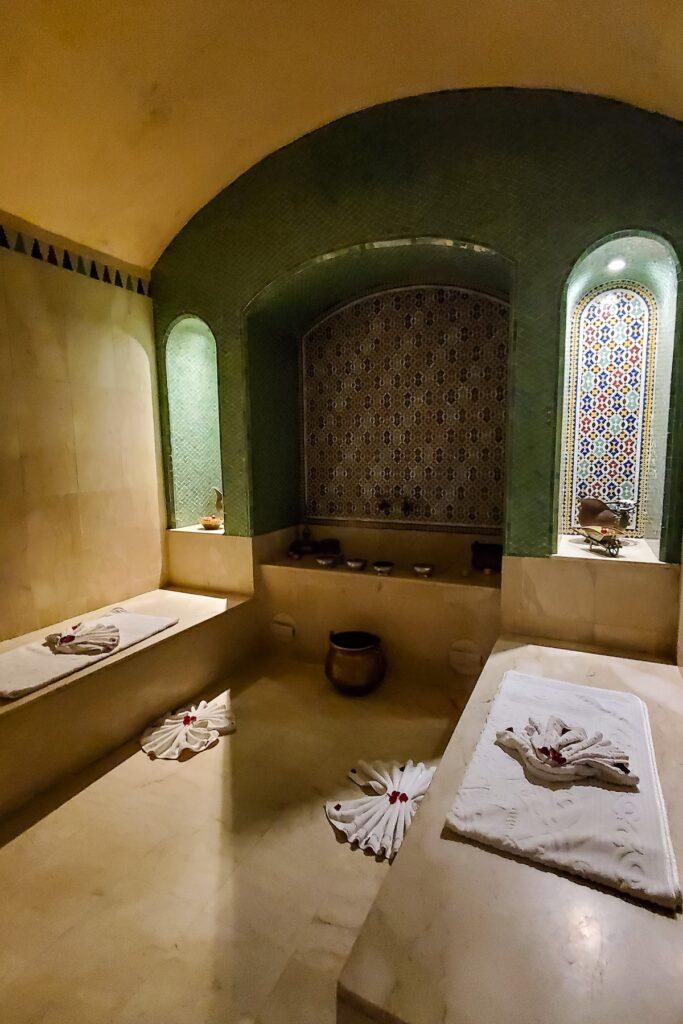
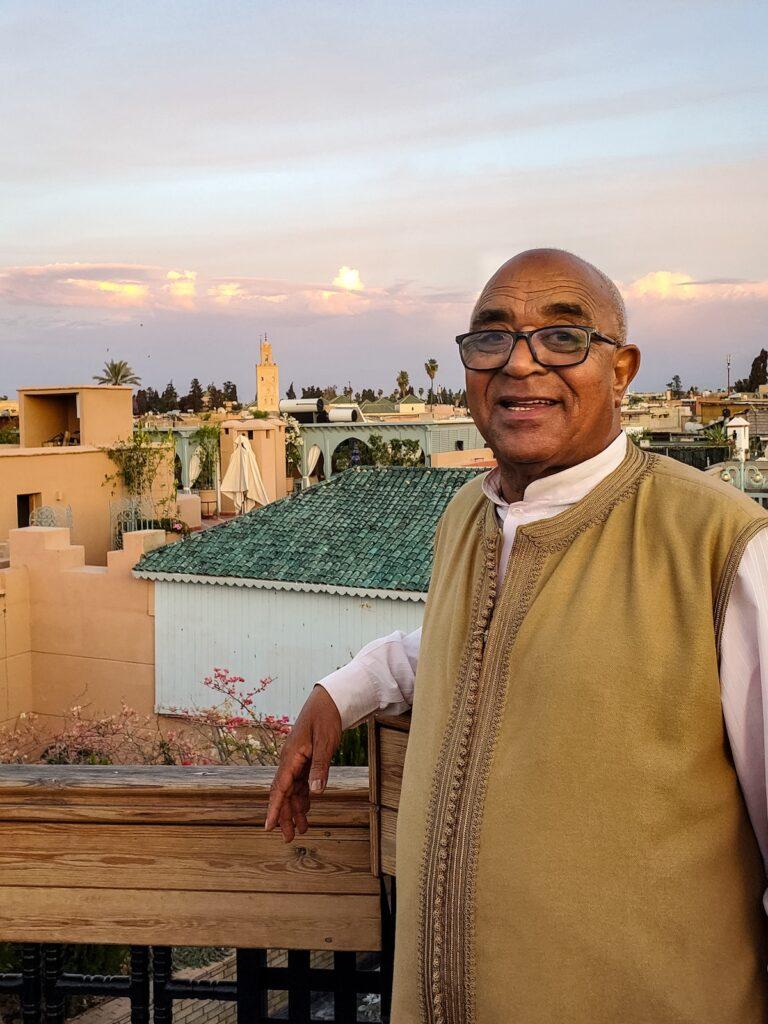
Above the Chaos
Above the chaotic bustle of the streets and the mazes of the medinas in Marrakech, a layer of peaceful calm hovered in the atmosphere. Locals had begun their celebration of Eid al-Fitr in unleashed revelry below. The uniform suede terracotta structures, ubiquitous to the city as a gesture of modesty, absorbed a hue of pink from the setting sun.
With this modesty, I felt a sense of mystery, too.
Moments earlier, on a tour that led to the roof gardens of Riad Kniza, world-renowned antique dealer Haj Mohamed Bouskri shared his deep cultural knowledge while guiding me through a treasure chest inside his authentically restored 18th-century luxury riad. Exploring the exquisitely displayed collection of unique artifacts, Bouskri revealed intriguing insights, including that of the Amazigh nomads of Morocco’s past.
He explained that the Arabic word riad means garden. That being made clear, I understood the practice of “bringing the outside in” with cultural architecture. Perhaps best exemplified in Marrakech’s historic Bahia Palace, the keyhole doorways, the mosaic and zellij tiles, and the courtyard gardens are classic Moroccan riad. Feminine symbolism, a language in itself, is notably ever-present, like in tapestries and Berber doors that hung before us in Riad Kniza.
If walls could talk.
The detailed Moorish architecture of Riad Kniza houses eleven rooms, plus an elegant hammam beside the garden pool. The jovial collector has a long history of hosting countless VIPs and world leaders here, no doubt for its charm and gastronomy. The stars appeared as I was bathed in the rooftop gardens with attentive hospitality, a Moroccan feast, tea, and such pretty tajines.
Women’s Cooperative In High Atlas
Along the winding red dirt roads in High Atlas Morocco, we reached an overlook in the Valley of Ourika, named for its Berber tribe. A lone souk welcomed me into his roadside market of vibrant pottery as my friend and I wandered, admiring the river and unspoiled landscape of cedar, oak, and unique flora.
Further up, intimate glimpses of the rural village intrigued me. We encountered a women-owned and run Argan Oil Cooperative that’s been cultivated here for some time. Sitting in a small circle, workers sang an endearing song while hand-pressing local argan, almonds, and roasted peanuts, siphoning out the aromatic goodness in their ancestral tradition. Fresh bread was offered to sample the nutritious delights with tea.
The cooperative is comprised of rural widowed and divorced women, I was told, to establish empowerment. In addition to the socioeconomic element, the initiative is also one of promoting protection for the forests. These natural commodities would be used for a variety of beauty, skincare, and fragrance products that lined the shelves like a Sephora.
So, I began my Christmas shopping.
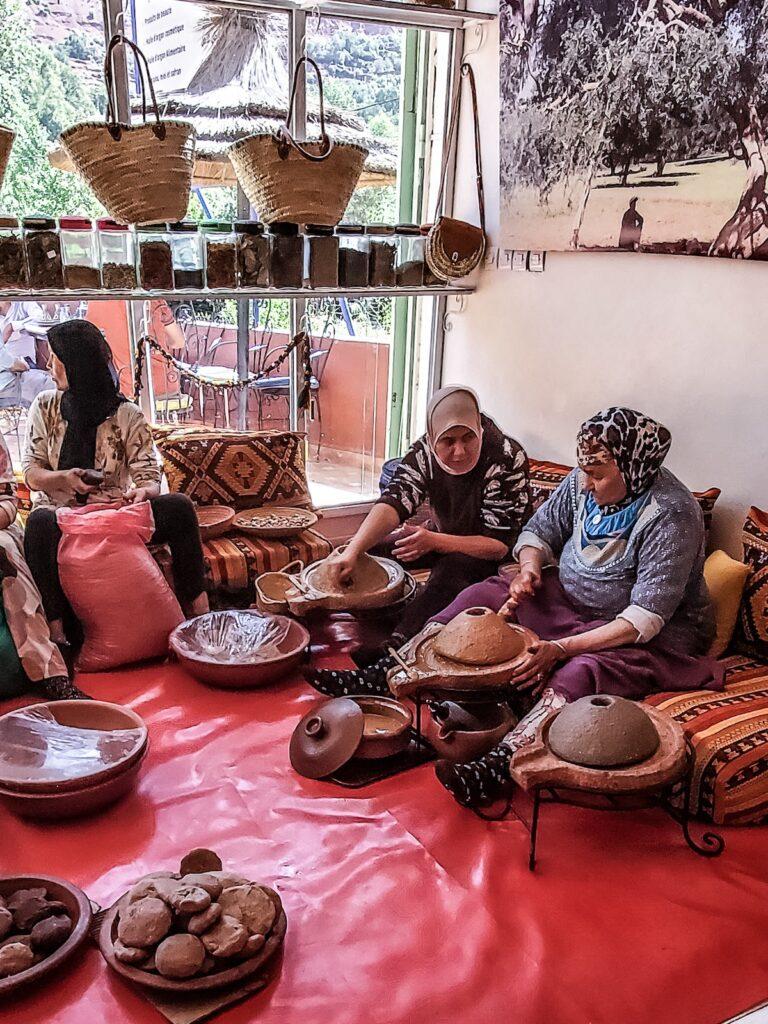
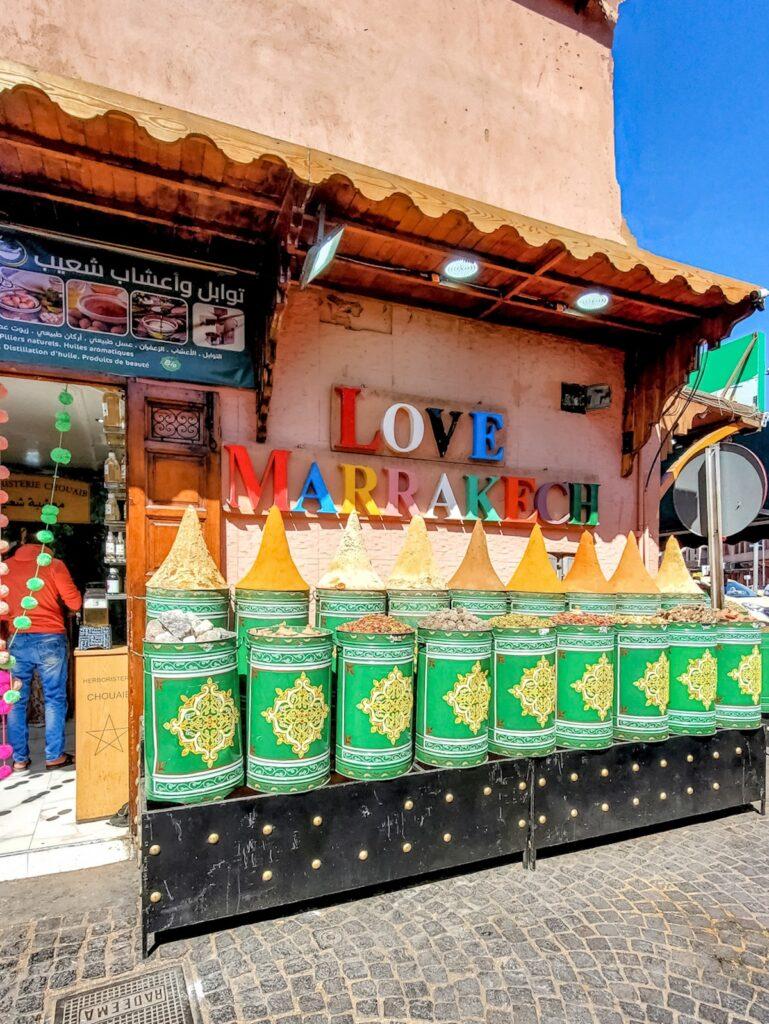
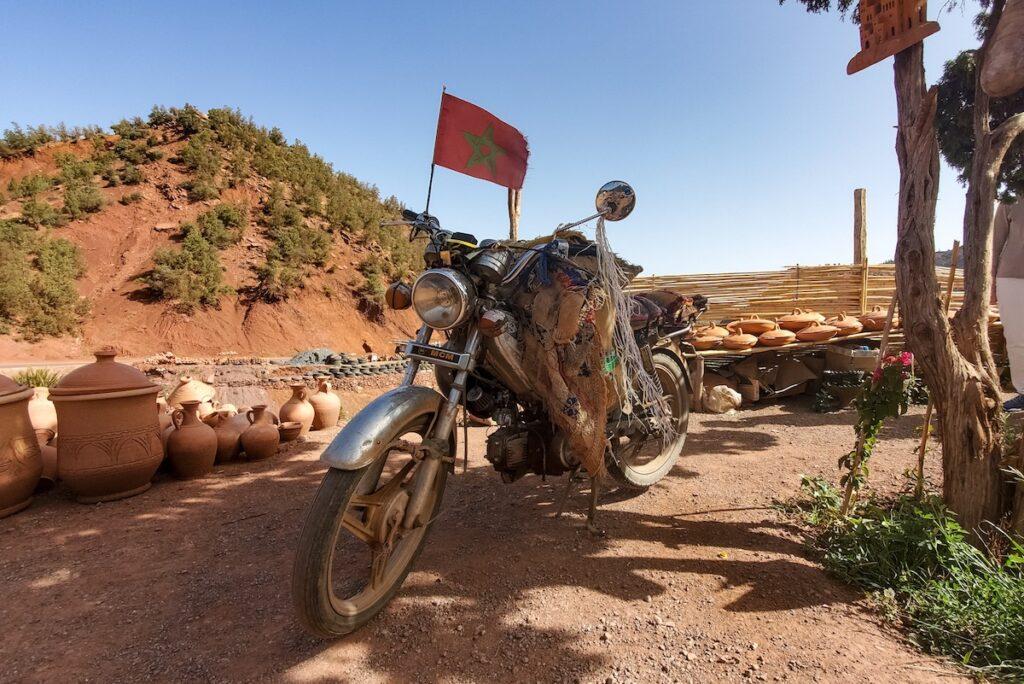
Jardin Bioaromatic
The beautiful view of Lake Lalla while feasting on rustic pizzas and vino and that fresh aromatic paella at Casa Lalla Takerkoust had all the feel of a Mediterranean oasis. Just an hour outside Marrakech, it was a delicious way to unwind from a day of scenic exploring.
I had just come from Jardin Bioaromatic. Touted as the first medicinal aromatherapy garden in Morocco, it is described as “a place committed to the environment, the senses, and well-being,” my guide, Fatima, informed me.
Founded by the French-speaking Belkamel brothers of Marrakech (one an aromatherapist, the other a pharmacist), this old potato field was transformed into a horticultural haven, creating a natural cosmetics product lab called Nectarome. Conducting practical research on plants is combined with “an awareness-raising dimension for the public here.”
The fragrances were thick and abundant, wafting from vivid plots of flora as I admired and meandered. We were awash in an atmosphere of instantaneous therapy and pure beauty. Jasmine, rosemary, citrus, musky oud, and more abound. The garden’s services include herbology, tea workshops, foot baths, and Moroccan bread making.
Bleu Majorelle
Wandering the labyrinth within the hovering gardens of Jardin Majorelle was an immersive sensory experience. The ever-present birdsong of Marrakech was in full chorus here. It would be easy to have an entire morning lingering about the luxurious landscape and its nooks; escaping, exploring in solitude.
Indeed, the garden was created as a sanctuary by French painter Jaques Majorelle beginning in 1922, growing to two acres of exotic botanicals forty years following. But the gardens are not the only attraction here. Beyond the lush green is a grand reveal of a Cubist-inspired villa built for Majorelle.
Enamoured with the vibrant tiles of Marrakech, the painter fell in love with a particular shade of cobalt blue he favoured so that he fully bathed the villa in the colour. It went on to become his own patented shade called Bleu Majorelle.
After his passing, along came French fashion legend Yves Saint-Laurent and partner Pierre Bergé who restored the famously unique property many flock to from all over like a pilgrimage. The Yves Sainte-Laurent Museum sits beside, not so modestly, adjacent to the Nomadic Berber Museum.
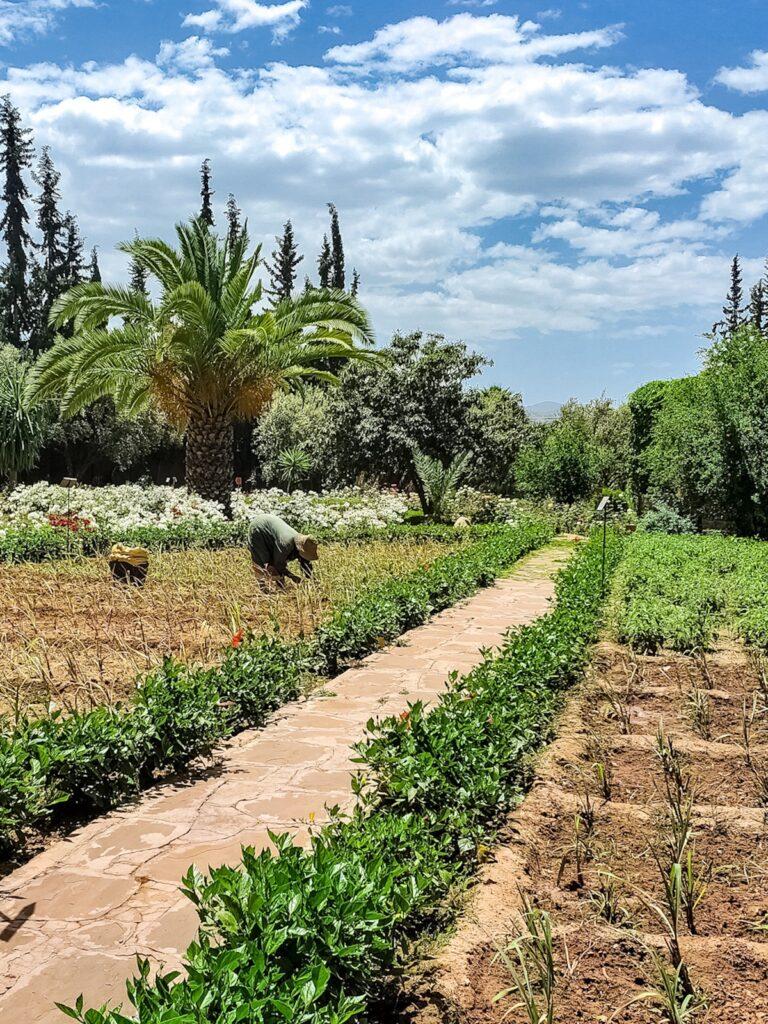
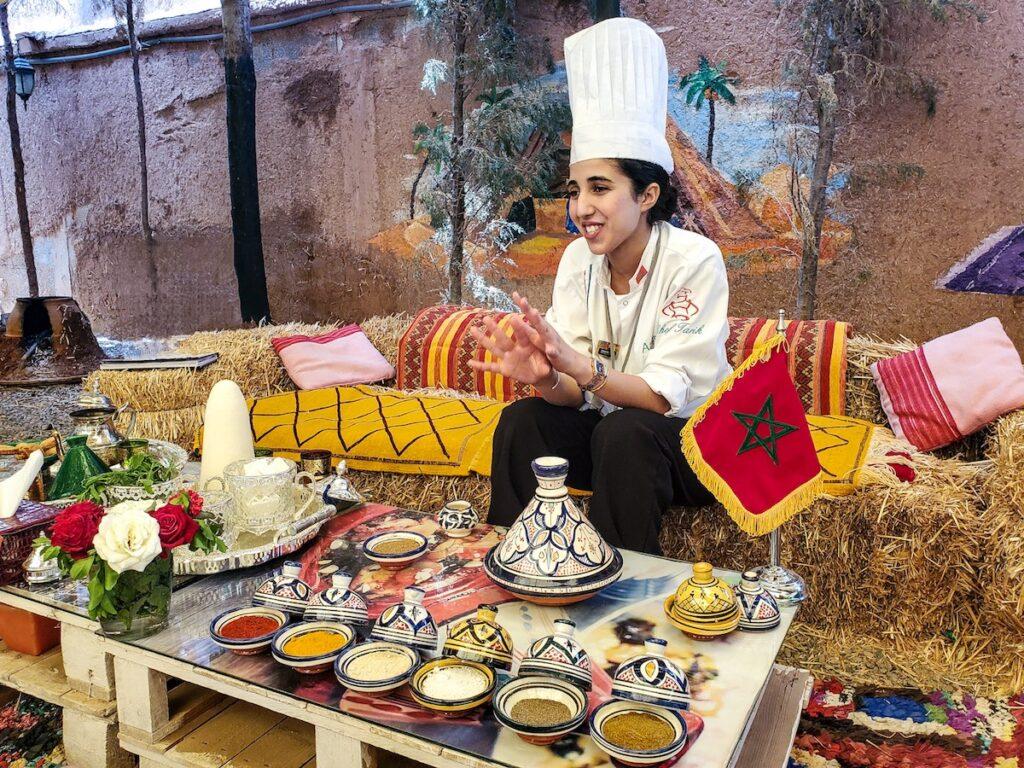
Like a Bedouin
Heading into the Agafay Desert for a taste of Bedouin life, I was grateful to rest. I won’t pretend it wasn’t a bit of glamping, but the breathtaking scenery and silhouettes of camels against the saturated sunset lent the tone. I could wonder more relatively about life as a wandering nomad.
Light effusion was nill but for the bonfire creating atmosphere as African drums approached from the distance. It was off the grid for sure here in Morocco, but I was still able to get a glass of Provencal rosé with my couscous.
Christopher Ludgate is a professional writer, photographer, and filmmaker. With many roads travelled on soul-nourishing itineraries, his travel stories combine culture, nature, wellness, art, and history. A longtime advocate and volunteer, one of his award-winning films documents his inspiring experience in service to NYC grass-roots organization, God’s Love We Deliver.

